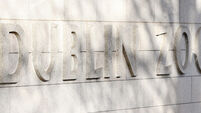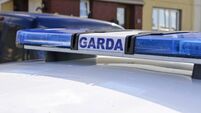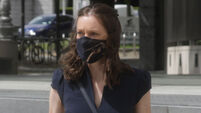Students get a reality check in physics
But he said students were given the chance to apply practical knowledge of physics to everyday situations. One question asked about conditions needed to see a rainbow and how cigarette smoke might enter a building.
He said the ordinary-level exam was more in keeping with previous papers, but also examined everyday applications of physics like glare-reducing sunglasses and the power consumption of a vacuum cleaner.
Ger Curtin of the Association of Secondary Teachers Ireland said the first section of both exams rewarded hard work on the practical side of the course.
He welcomed the clear language at ordinary-level and the use of current issues, such as an ordinary-level question about last year’s nuclear disaster in Japan, and the topic of wind energy on the higher-level exam.
For Junior Certificate woodwork students, TUI’s Michael Leyden said the second section of the higher-level exam was challenging but fair, and a design question about a storage unit for drawing equipment gave students a chance to showcase their skills.
Mr Leyden said the ordinary-level paper was very fair and the only problem some students might have had was in part of a question asking how they would make copies of chess pieces on a lathe.
ASTI spokesperson Noel Scott welcomed the real-life applications, including a question about a toy storage unit in the higher-level paper. He said the ordinary- level exam moved away from traditional essay-type questions to more relevant topics, and included designs for a cookery book stand and a remote control holder.
Around 5,800 students were entered for Leaving Certificate accounting and ASTI representative Peter Quinn thought the higher- level exam was a good test of student ability. He said it was challenging but fair and most candidates should have had no major problems.
Mr Quinn said the ordinary-level exam offered students the kind of questions they would have been prepared for.
ASTI’s John O’Sullivan said the higher-level Junior Certificate technical graphics exam was fair but challenging.
He said it was commendable students had to apply their knowledge to a variety of interesting artefacts, such as an ornamental well at higher- level and an ordinary-level question based on a letter box.
The final higher section question about a horse stables logo was particularly challenging and a short question about a sales chart crystallised the important relationship between the technical graphics and maths curricula.
Michael Martin, TUI’s subject spokesperson, said both papers were in similar format to other years, with just a few challenging questions worth noting.
For example, he said ordinary-level students could have found a short question asking for the area of a shield-shaped trophy and a longer question based on a locksmith’s logo tough.
At higher-level, he thought short questions on a pyramid and a triangle were challenging.











